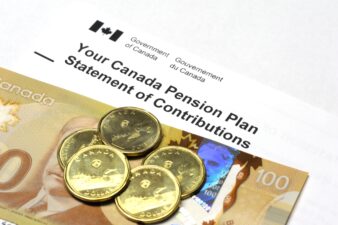Many retirees are looking to give themselves a raise. Their invested principal is fixed, and as growth is limited with high-yielding investments, the only way to boost one’s monthly income is to take on slightly more risk with even higher yielders — or so most retirees think.
What many retirees may not know that is it is possible to give oneself a raise with a higher yielder while actually lowering the magnitude of risk that one bears.
That goes against the phrase that your financial advisor likely touts ad nauseam: “higher risk, means higher reward.” So, how the heck can you lower your risk while increasing your monthly income?
Enter covered call ETFs like the BMO Europe High Dividend Covered Call ETF (TSX:ZWP), and the BMO Europe High Dividend Covered Call Canadian Hedged ETF (TSX:ZWE), two flavours of the BMO’s European-focused ETFs with yields of 7%, and 6.7%, respectively.
I’m a massive fan of BMO’s roster of ETFs as they sport ridiculously low MERs and have set-in-stone fund strategies that “active” managers aren’t allowed to deviate from.
Canadians get to keep more of their money as fees are drastically lower than most other actively managed mutual funds. And as BMO ETFs are required to abide by a strict strategy that prevents excessive trading activities, lower commissions (and tax liabilities) are to be expected relative to your average active mutual fund. The savings relative to mutual funds go right back into the pockets of investors.
Moreover, BMO ETFs implement strategies to generate premium income from the writing of covered call options. The average Canadian likely has no idea how options work, let alone how options-based strategies are able to produce additional income without added risks.
Now, there’s a lot unpack with the ZWP and ZWE. As you’ve probably guessed, both ETFs invest in European-based stocks with high dividend yields. What you may not understand is the “covered call” part.
Unlike most ETFs, covered call ETFs have two sources of passive income: dividends/distributions from owned securities and premium income from options writing. Through the writing of covered call options, managers at both ETFs are able to lock-in premium income on top of the dividends and distributions received from various long positions, resulting in much larger yields that wouldn’t have been possible otherwise.
Now, covered call ETFs aren’t some sort of free lunch. While retirees do receive more downside protection from the added premium income which further dampens potential downside, the premium income comes at the expense of potential upside in various securities that have covered calls written against them.
In an upmarket, covered call ETFs will underperform their non-covered-call counterparts. Thus, for younger long-term investors, such ETFs are less desirable, especially since you’ll need to pay managers (in the form of a slightly higher MER relative to non-covered-call ETFs) for their labour of writing covered calls.
For retirees, however, the trade-off is ideal. Swapping a bit of “upside risk” for further downside protection and a passive income boost is a trade that most retirees would make in a heartbeat.
So, should you opt for the hedged or non-hedged version of the Euro-focused covered call dividend ETFs?
That depends on how well you think the loonie will hold up versus the euro.
I’d recommend not speculating on currencies and merely opting for the non-hedged version, as it’s got the slightly higher yield.
Stay hungry. Stay Foolish.







